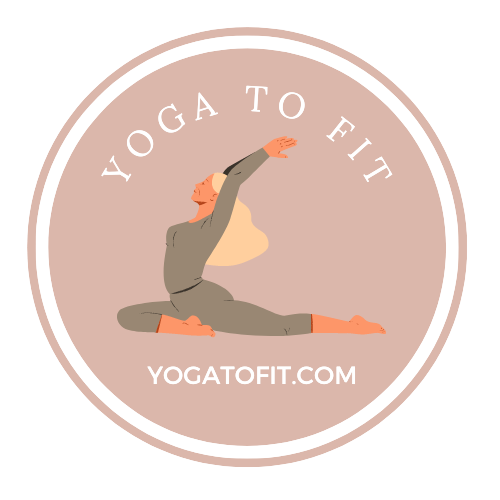Camel Pose: Different Ways To Practice

Camel pose is a popular yoga pose that offers numerous benefits for the mind and body. It is a backbend posture that stretches the entire front body while strengthening the back muscles. Practice Camel pose regularly to improve posture, relieve stress and anxiety, increase energy levels, and enhance overall well-being. However, it can be challenging to get into the pose and maintain it for an extended period without proper guidance.
In this article, we will provide step-by-step instructions on how to practice camel pose safely and effectively, along with modifications and variations to suit your needs and level of experience. Whether you are a beginner or an advanced yogi, this guide will help you deepen your practice and reap the benefits of Camel pose.
Camel Pose Step-by-Step Instructions
Although camel pose can be mentally and physically difficult to master, there are some advantages to including it in your yoga routine. Here is a step-by-step explanation to practice.
Step 1: Warm-up
Before attempting any back-bending posture, it is essential to warm up the body properly. A good warm-up helps to prepare the muscles and joints, increase blood flow, and prevent any injury. You can start with some simple stretches like downward-facing dog, cat-cow, and lunges. You can also do some pranayama or breathing exercises to oxygenate the body and calm the mind.
Step 2: Start in a kneeling position
To practice camel pose, come onto your knees on the mat with your feet hip-width apart. Keep your toes curled under and your hands resting on your hips. You should keep your spine straight and your shoulders relaxed. Take a few deep breaths here, inhaling through the nose and exhaling through the mouth.
Step 3: Engage the core
Before going into the back-bending part of the pose, it is important to engage your core muscles. Draw your belly button in towards your spine and lift your lower ribs. This will help to protect your lower back and provide support to your spine.
Step 4: Lift your chest and arch your back
Now, slowly start to lift your chest up towards the ceiling, arching your back. Keep your hands on your hips and your elbows close to your body. Remember to engage your core and keep your hips over your knees. Take a few deep breaths here and feel the stretch in your chest, shoulders, and neck.
Step 5: Reach back for your heels
If you feel comfortable in the previous step, you can now reach back with your hands and grab your heels. Keep your fingers pointing towards your toes and your palms facing down. If you can’t reach your heels, you can place your hands on your lower back or on the back of your thighs. Your elbows should keep close to your body and your shoulders relaxed.
Step 6: Lift your hips
As you reach back for your heels, lift your hips up towards the ceiling. This will deepen the backbend and create more space in your spine. Keep your thighs perpendicular to the floor and your knees hip-width apart. Make sure you are not collapsing in your lower back and that you are still engaging your core.
Step 7: Hold the pose and breathe
Once you are in the full expression of the pose, hold it for a few deep breaths. Take long inhales through the nose and exhales through the mouth. Direct your attention towards expanding your chest and easing the tension in your shoulders. You can also close your eyes and turn your gaze inward, observing any sensations or thoughts that arise.
Step 8: Come out of the pose
To come out of the camel pose, release your hands from your heels and slowly bring your hips back down towards your heels. Take a few deep breaths in a child’s pose to release any tension in your lower back. You can also do some gentle twists or forward folds to counteract the back-bending movement.
Modifications and Variations
There are several modifications and variations of camel pose that you can try, depending on your flexibility and experience.
Use a block: If you have difficulty reaching your heels, you can place a block between your feet and reach back to hold onto the block instead.
Use a strap: If you have tight shoulders or cannot reach your heels, you can use a strap. Place the strap around your ankles and hold onto the ends with your hands.
Supported camel pose: If you have a weak lower back, you can perform the pose with the support of a wall or a chair. Stand facing the wall or chair, and place your hands on the support. Lean back slowly, keeping your hips over your knees.
Advanced camel pose: If you are an experienced practitioner, you can try the full expression of the pose by reaching back to hold onto your heels with your hands and dropping your head back to rest on your heels.
Safety tips for practicing camel pose
As with any yoga pose, it is essential to practice camel pose with awareness and caution to avoid injury.
Some safety tips are:
Warm-up: Always warm up the body before practicing camel pose, with some gentle stretches and chest-opening exercises.
Listen to your body: Do not force yourself into the pose or push beyond your limits. Always listen to your body and respect your boundaries.
Engage your core: Engage your core muscles to protect your lower back and prevent excessive compression in the spine.
Benefits of Practicing camel Pose
Here are some of the key benefits of practicing camel pose:
1. Improves posture: Camel pose strengthens the back muscles and opens up the chest, which can help improve posture and alleviate pain or discomfort associated with slouching or hunching.
2. Stretches the front of the body: This pose is an excellent stretch for the hip flexors, quadriceps, and abdomen, which can help relieve tension and tightness in these areas.
3. Improves spinal flexibility: By arching the back deeply, camel pose helps to increase the flexibility of the spine and promote healthy movement and circulation.
4. Relieves back pain: Camel pose can help to alleviate back pain and discomfort by strengthening the muscles of the lower back and opening up the chest and shoulders.
5. Promotes digestion: The compression and stretching of the abdomen that occurs during camel pose can help to stimulate the digestive organs and improve digestion.
6. Reduces stress and anxiety: Practicing camel pose can help to release tension and reduce stress and anxiety by opening up the chest and heart center.
7. Boosts energy levels: Camel pose can help to increase energy levels by opening up the chest and lungs and improving circulation throughout the body.
Is camel pose safe?
It is recommended to practice under the guidance of a qualified yoga instructor, particularly if you are a beginner. Your instructor can help you understand the correct alignment and modifications to make the pose safe and accessible for your body.
Additionally, if you have any medical conditions, such as back or neck problems, high or low blood pressure, or heart disease, it is important to consult with your doctor before practicing Camel Pose or any other yoga posture.
Simply squat as low as feels natural for your body, paying particular attention to your posture. Keep in mind that the purpose of yoga is to connect with your body, breath, and mind in a way that feels secure and nourishing to you, not to perfect a certain pose.
Who should not do camel pose?
While anyone can practice Camel Pose, there are certain people who may find it difficult or should avoid it altogether.
People with neck or lower back injuries or chronic pain may find Camel Pose uncomfortable or even painful. Pregnant women should avoid Camel Pose during the second and third trimesters as it may cause discomfort or put pressure on the abdomen.
People with high or low blood pressure, heart problems, or vertigo should also avoid Camel Pose or seek guidance from a qualified yoga teacher before attempting it.
If you are unsure whether you should attempt Camel Pose, it is always best to consult with a healthcare professional or a certified yoga instructor.
FAQS
Q: What are the benefits of practicing camel pose?
A: Camel pose can have many benefits, including improved posture, increased spinal flexibility, strengthened back muscles, improved digestion, and reduced stress and anxiety.
Q: How does camel pose improve posture?
A: Camel pose stretches the chest and shoulders, which can help improve rounded shoulders and hunching. By opening up the chest and shoulders, camel pose can also help promote a more upright and open posture.
Q: How does camel pose increase spinal flexibility?
A: Camel pose involves a deep backbend, which can help stretch and strengthen the muscles and vertebrae along the spine. This can help improve overall spinal flexibility and mobility.
Q: How does camel pose strengthen back muscles?
A: Camel pose requires a lot of back strength to maintain the position, especially in the lower and middle back. By practicing regularly, you can help strengthen and tone the muscles along your spine.
You May Also Like
How To Practice Screaming Toe Pose?
Half Monkey Pose Practice: 8 Easy Ways To Do It Properly
Spiritual Yoga Practice: 7 Spiritual Laws
Conclusion
In conclusion, practice camel pose regularly to improve flexibility, strengthen the back muscles, and stimulate the digestive system. However, it is important to approach this pose with caution, especially if you have any pre-existing neck, shoulder or back injuries.
To practice safely, it’s important to warm up adequately, listen to your body, and gradually work your way up to the full expression of the pose. Remember to focus on your breath, engage your core, and maintain proper alignment throughout the posture.
With regular practice and patience, you can reap the benefits of this powerful yoga pose and enhance your overall well-being.



